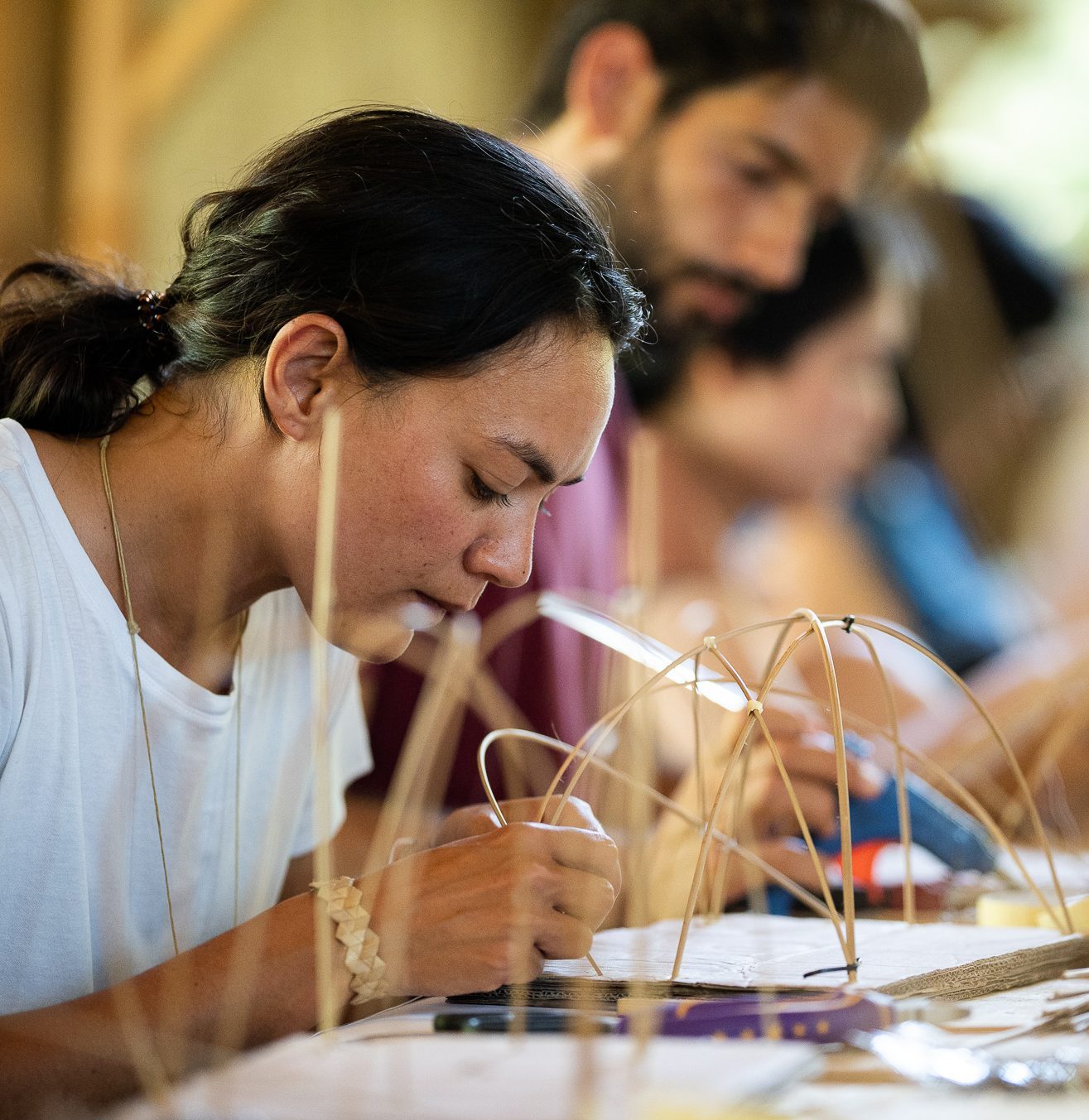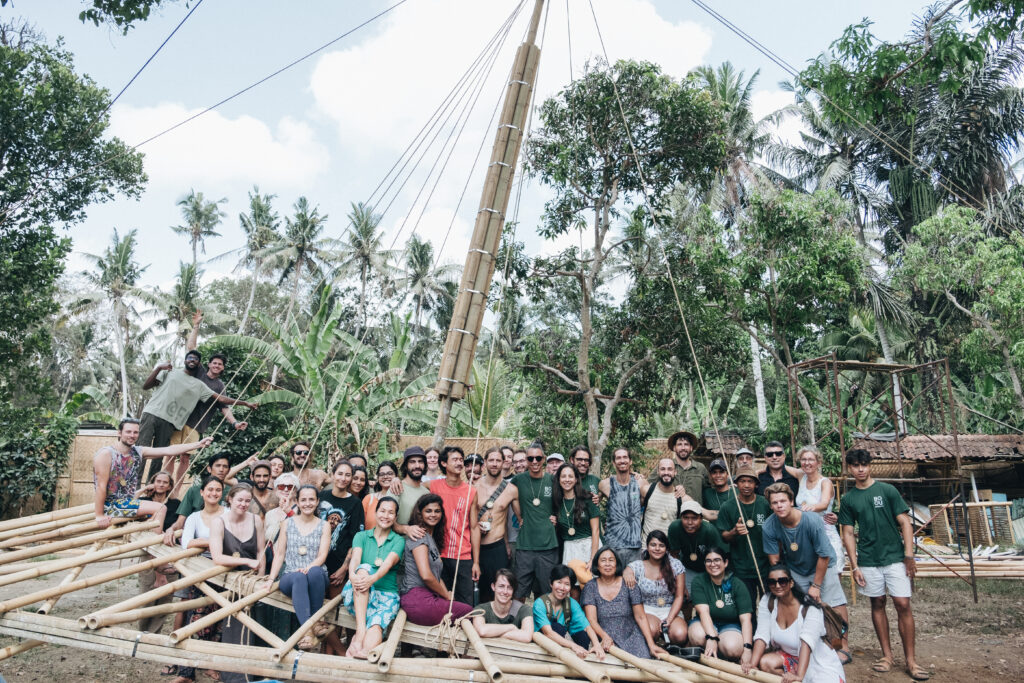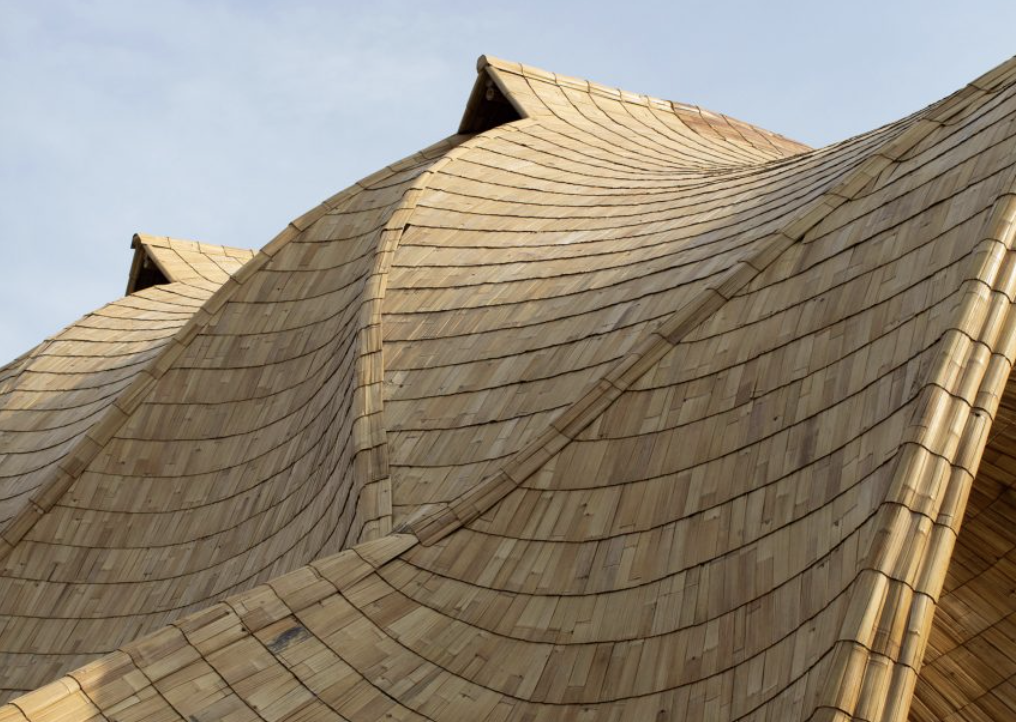How to Build with Bamboo: Structural Systems
By Rodrigo Istchuk | May 29, 2023 | Design - Construction -

This article shines a light on four commonly employed structural systems in bamboo construction
Are you captivated by the elegant beauty of bamboo architecture and curious about how these impressive structures come to life? This article shines a light on four commonly employed structural systems in bamboo construction:
- The classic Post-and-Beam Method
- Hyperbolic Paraboloids
- Hyperbolic (twisted) Towers
- Spatial grid shells
Contemporary bamboo buildings may initially appear overwhelming to the novice observer. Yet, as you learn more about the structural logic of these inspiring edifices, you'll quickly realize that most employ one or a blend of the structural systems we're about to explore. The mystery unravels, transforming what once seemed complex into a clear composition of simple concepts.
At Bamboo U, we take pride in fostering creativity and building structures that marry aesthetics and functionality. If you're interested in discovering how to build with bamboo and create awe-inspiring structures, you're in the right place. Now let’s take a look at the main structural systems used in bamboo construction and how to build using them.
Post-and-Beam Structures
Post and beam structures, a staple in bamboo architecture, draw inspiration from the age-old technique of timber framing. Much like the time-honored methods used in traditional wooden houses, this construction approach employs the same basic principles.

The support system of a post and beam structure is composed of three key elements: vertical posts, horizontal beams, and cross-bracings. The latter helps to triangulate the structure, enhancing its stability against lateral loads such as winds and seismic forces. Usually, round bamboo poles serve as the backbone of these structural systems. The result is a structure that is not only sturdy but also visually appealing.
However, constructing post and beam structures does come with its challenges. The process often requires skilled craftsmanship to carve and assemble various types of joints, including fish mouth joints and angle joints. As the demand for such craftsmanship rises, so does the cost associated with it.
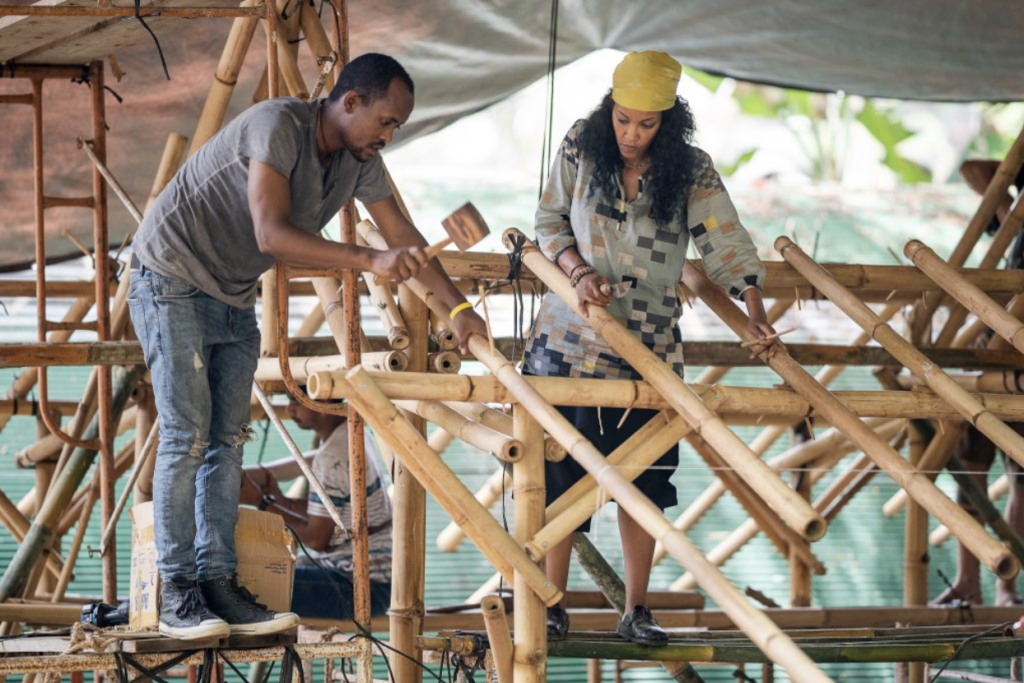
But fear not, modern advancements offer solutions to this issue. A simple bolted joint, for instance, can be used in this structural system to alleviate some of the manual labor. When used alongside mortar for grouting, this type of joint has proven to be incredibly strong, offering a cost-effective and efficient alternative to traditional methods.
In an era of rapid technological advancement, new solutions continue to emerge. Nowadays, we even see the use of 3D-printed inserts that mimic the function of fishmoths. These inserts can be placed into cleanly cut bamboo, offering an innovative, modern solution that combines tradition with technology.
To learn more about the post-and-beam structural system, you can check this dedicated article in our blog: https://bamboou.com/bamboo-structural-systems-post-and-beam/
Hyperbolic Paraboloids
A hyperbolic paraboloid, or a 'hypar' for short, is a structural system that's as intriguing as its name suggests. Recognizable by its signature 'saddle' shape, it presents a marriage of concave and convex surfaces. The result is a structure where two straight lines intersect at every point, creating a captivating visual effect.
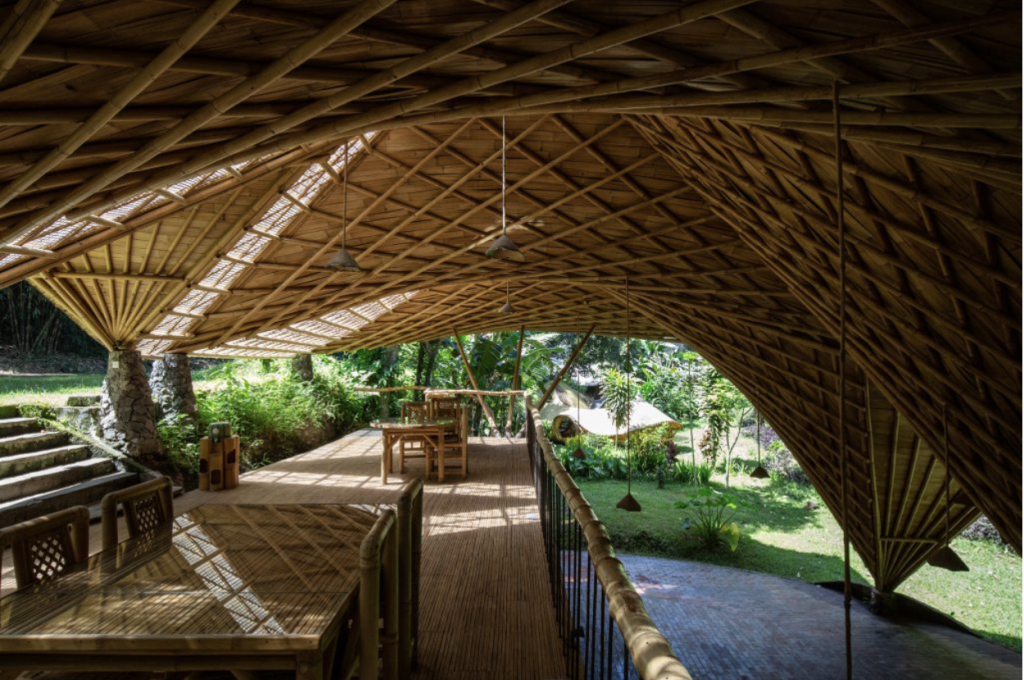
The curvature of the surface lends these shells extraordinary stiffness, allowing them to bear considerable loads over vast spans. These qualities make them especially suited for roof structures, though their presence can be seen far and wide in both construction and everyday objects – even in the shape of a Pringles chip!
The building process typically commences by first laying poles in one direction and then in the other. These are temporarily secured using rubber bands, an ephemeral measure that allows for subsequent adjustment. The magic of the hypar shape then comes to life as two opposing vertices of the structure are hoisted using ropes and tripods, while the alternate vertices are simultaneously pressed together. This action induces the characteristic curvature of the hypar, with individual poles adjusting to match the desired shape. The process culminates in the permanent securing of the hypar members, typically through the use of bolted joints or bamboo pins.
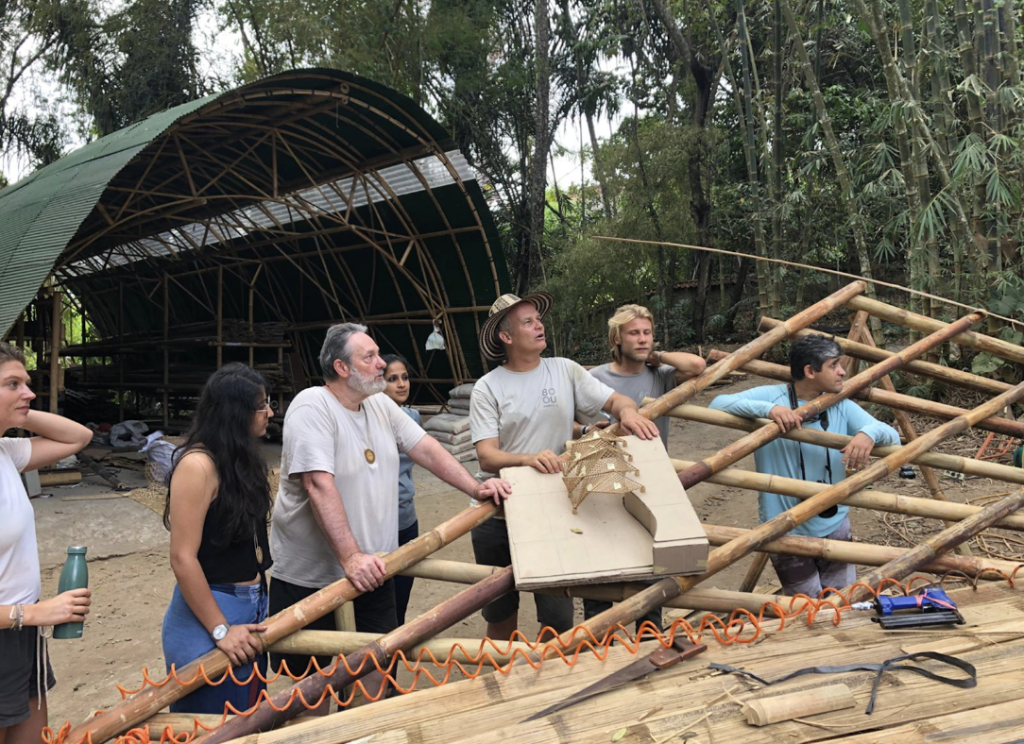
The success of a hyperbolic paraboloid in bamboo architecture lies in the efficient load transmission across its surface. This allows for the structure to carry compression in the arches while simultaneously creating tension in the linear structural members. To learn more about the hyperbolic paraboloid structural system, you can check this dedicated article in our blog: https://bamboou.com/hyperbolic-paraboloids-in-bamboo-architecture/
Hyperbolic (Twisted) Towers
The world of bamboo construction is marked by incredible structures, among which the hyperbolic, or twisted towers, truly stand out. These structures, akin to reciprocal structures, exhibit the remarkable strength and versatility of bamboo.
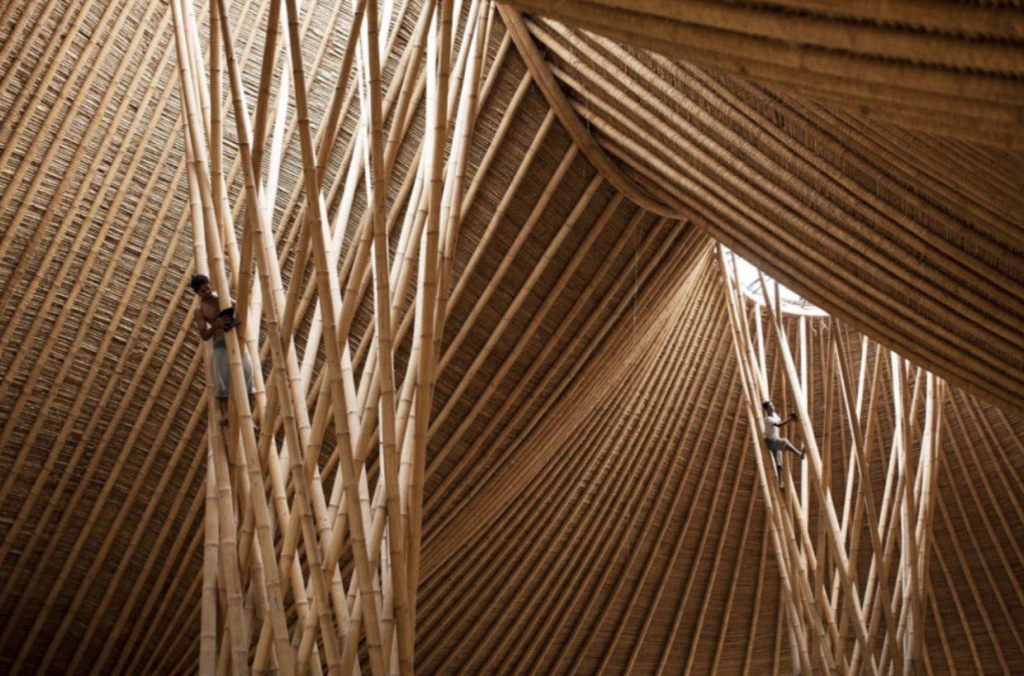
The shape of a Reciprocal Tower is reminiscent of a hyperboloid, bearing similarities with the hyperbolic paraboloid. A key difference lies in the geometric construction of the reciprocal tower, which involves rotating a hyperbola around a defined axis. This rotation gives birth to a single-sheeted hyperboloid, unlike the hyperbolic paraboloid which has a doubly-ruled surface.
Embarking on the construction of a hyperbolic tower, it is beneficial to first create a model. This preliminary step allows you to visualize the final product, enabling you to determine the appropriate diameters for the base circle, as well as the middle and top sections of the tower. It's crucial to understand that these parameters are interconnected, significantly impacting the final height of the tower as well. Thus, it's essential to study these relationships thoroughly beforehand. Alternatively, computerized design tools can be employed to facilitate the planning process.
The reciprocal tower's unique characteristic lies in the marriage of reciprocal structure principles with the efficient hyperboloid shape, making it an optimal choice for larger constructions. The intersection points on the reciprocal tower, generated by the two opposing twists, provide the structure with enhanced strength through triangulation. To further increase the tower's strength, reinforcement rings can be added throughout the structure.
The construction starts by arranging a specific number of bamboo poles vertically on the ground in a circular pattern. For instance, if you have 12 poles, think of placing each pole at an hourly point on a clock face. Following this, a central ring, smaller than the base circle, is fixed at the chosen height above ground. Once the central ring is secured, the exciting part begins - twisting the poles. Each pole is uniformly twisted in one direction and temporarily attached to the central ring to maintain its position. Then, a second set of poles is introduced. The base of these poles aligns with the first set, but they're twisted in the opposite direction, following the same angle as the first set. These poles are also temporarily fastened to the central ring. At the level of the top ring, all pole ends must meet as well. Once all poles are in position and the desired shape of the tower is achieved, the poles are permanently secured at the points where they intersect. This step ensures the tower's stability and strength.

For more in-depth information about the reciprocal tower, you are welcome to read this dedicated article on our blog: https://bamboou.com/reciprocal-tower-in-bamboo-architecture/
Spatial Gridshells
Bamboo construction continually innovates through structures like Spatial Gridshells, demonstrating the boundless potential of this material. These structures, lightweight yet sturdy, are fashioned from a lattice of bamboo splits. These splits, either intertwined organically or arranged in precise shapes, create captivating, often dome-like structures. The gridshell structural system is a favorite in modern bamboo architecture, credited to its ability to produce elegant, curved forms exhibiting exceptional strength. Furthermore, gridshells excel in crafting large, open spaces, without the need for additional interior supports.
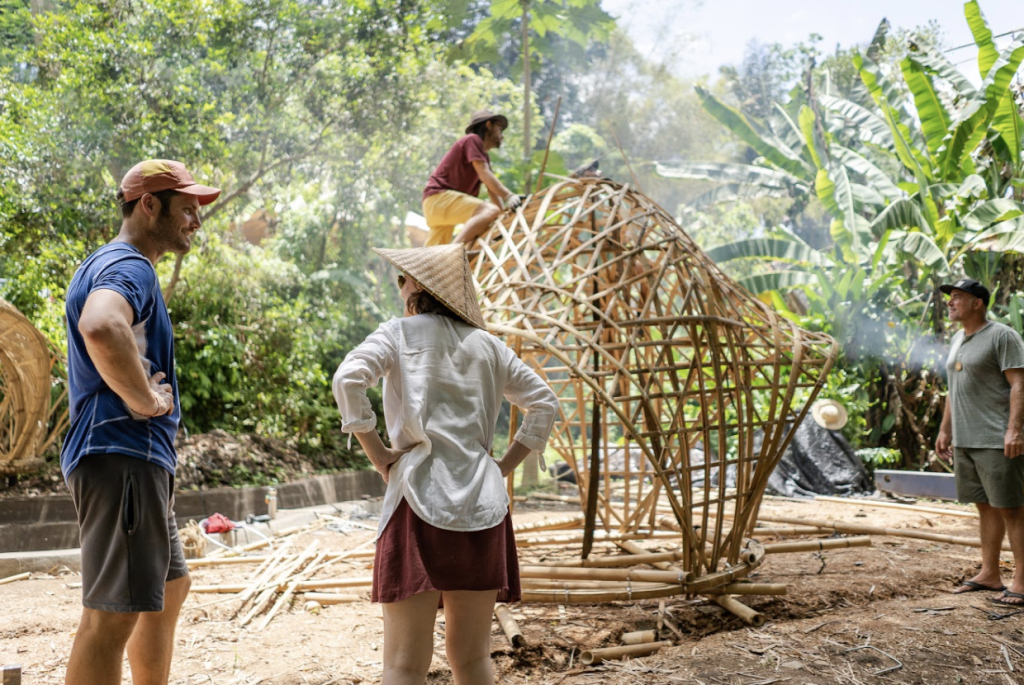
The construction of these structures commences with establishing the main frames, arches, or rings that provide the foundational support and overall shape for the grid-shell. Typically, these elements are composed of lidi or split bundles, secured together using bamboo pins, and occasionally fortified with glue. Once these primary structural components are set, the gridshell begins to take shape with the addition of bamboo splits, progressively filling the gaps and generally culminating in a curved structure.
The construction process can be playful and organic, as bamboo splits are easy to handle and can be shaped into various forms. Organic woven patterns, if preferred by the designers, can be determined on-site through trial and error, guided by reference splits. Alternatively, structures can also be built by adhering to predetermined measurements, thus creating beautiful geometric patterns. In either case, green bamboo splits, which have been recently treated, work best and are more flexible, as dry splits tend to be too rigid and often crack. Upon adding a sufficient number of members, the grid shell becomes sturdy enough to be climbed on, and in some cases even endure heavy winds and earthquakes, thus demonstrating the impressive durability and rigidity of these structures.

Remember, bamboo's inherent characteristics of aesthetic and structural versatility make it an ideal material for grid shell structures. With prudent planning, a sound understanding of the material, and a dash of creativity, constructing with bamboo presents opportunities to create sustainable, resilient, and visually arresting structures. For an in-depth understanding of creating curved structures using bamboo, we recommend this article from our blog: https://bamboou.com/3-ways-to-create-curved-structures-using-bamboo/
Learn more about Bamboo U 11 Day Build and Design Course https://bamboou.com/11-day-course

Structural Engineer from Brazil, specializing in Bamboo Structures and Bio Architecture. With a multidisciplinary approach, Rodrigo has been teaching, designing, and collaborating with various Bamboo players around the world. For Rodrigo, bamboo is a tool to create meaningful change in people and the environment.
June 7-18, 2024
The 11 Day Bamboo Build & Design Course in Bali
In 11 days, we'll show you how to build bamboo structures we’ll share all that it takes to build with nature.
April 26, 2024
The Fundamentals of Building with Bamboo Online Course
All the fundamentals you need to get you started working with bamboo. Deep dive into cinematic videos and step-by-step guides that will provide you with a strong understanding of bamboo as a design and building material.











